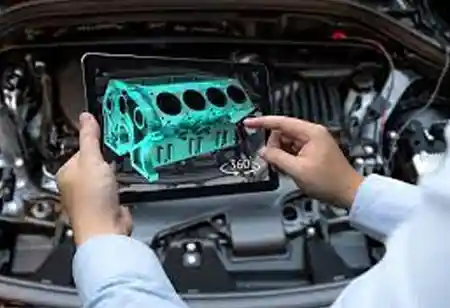Augmented reality helps create various types of head-up Displays for diverse applications in the automotive industry
FREMONT CA: Most people have been behind the wheel. So, consider a dashboard in the car that displays an unusual alarm. What would one do in this situation? The traditional answer is to consult a multi-page paper manual, call a mechanic, or ignore it. Is there anything, however, that is more secure and convenient? It is as simple as putting the smartphone camera in front of the alert and receiving an instant response. Augmented Reality (AR) makes this feasible by combining data and images with real-world experiences. AR benefits automobile owners and the entire automotive industry: AR opens up new possibilities at every stage of the process.
AR has the power to enhance solutions in various ways, including visual, haptic, aural, somatosensory, and olfactory. Visual types of augmented reality—via screens or glasses—predominate in the automotive industry. For example, AR helps create various types of Head-Up Displays (HUDs) for diverse applications in the automotive industry.
So, what does augmented reality bring to the table, and why are so many automakers putting money and effort into it? Unlike expensive virtual reality, which must create an entire environment, considerably less expensive augmented reality adds virtual elements to the physical world. AR provides context to a display by placing 3D models in real-world scenarios.
With the use of markers or sensors, 3D models can be embedded into the digital world.
Markers: Merging real and virtual environments is founded on a camera that extracts features from markers—images, QR codes, or tangible objects—when employing marker-based solutions. In the automotive business, using AR to retrieve automobile parts from a warehouse is an example of how this works.
Sensors: Sensor-based solutions are dependent on the precise camera position in relation to a real-world item. GPS (Global Positioning System), RFID (Radio-frequency identification), and Wi-Fi are examples of technologies that can help define a position. This is the greatest option for situations where safety is paramount, such as an AR-assisted dashboard that monitors road conditions and surroundings.
Deep learning algorithms must be trained for both sensors and markers to detect objects in live data accurately.

 Copyright © 2025 AutoTech Outlook. All Rights Reserved | Privacy Policy | Subscribe | Sitemap | About us | Feedback Policy | Editorial Policy
Copyright © 2025 AutoTech Outlook. All Rights Reserved | Privacy Policy | Subscribe | Sitemap | About us | Feedback Policy | Editorial Policy